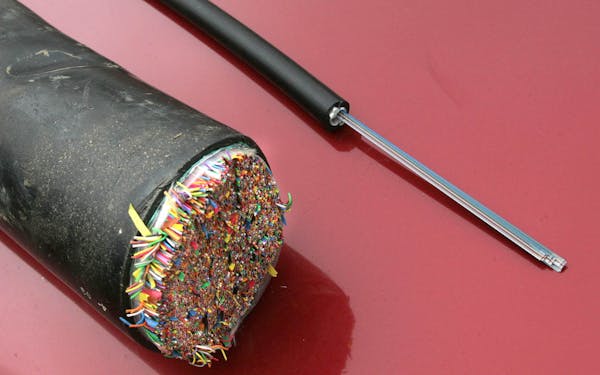Stuart Maxwell was outside one late night three years ago, enjoying a cigar in his Como Park neighborhood, when a whirring noise drew his attention to a nearby streetlight. He saw men spooling wire that connected several lights together.
Maxwell immediately called police and watched as officers took five men into custody. Little did he know, but the crime he witnessed would be repeated over and over this year. Copper thieves have plunged several blocks-long sections of St. Paul — from Como to Phalen and areas in between — into darkness.
"I thought, 'Hey, that's our park,' " Maxwell said of the five men he watched. "Sadly, it's not new. But it's more common now."
The problem has proved vexing, as thieves return to pull new wires almost as soon as city crews bring the street lights back online. Officials from Public Works to Parks and Recreation, from the Police Department to City Hall, say they are struggling to keep the lights on.
"They're doing permanent damage. It's a safety issue," said Public Works Director Sean Kershaw, who estimates St. Paul has spent $750,000 to repair damaged streetlights this year alone. "In some places, there is simply nothing we can do."
Crews are taking a variety of steps to make it more difficult to get at a streetlight's copper wiring, Kershaw said. In some cases, they are using epoxy or metal bands to better seal access panels. The city has ordered 90 new lights with access panels 10 feet off the ground to replace those that have been hit the most.
But unless and until something is done to dampen the market for copper, city officials say, the thefts are likely to continue. In much the same way it took federal and state action to slow catalytic converter thefts, officials say they cannot fight wire theft by themselves.
"It's like whack-a-mole," said City Council President Amy Brendmoen, who represents Como Park.
Brendmoen, who walks around Como Lake every morning, said the spreading darkness caused by wire theft "is a big problem, and it's getting worse." And it's happening in cities across the country, she said.
"I do think at the end of the day, we're going to need some help from the feds like we did with catalytic converters," she said. "We need to look to scrap yards to see what they are accepting, maybe consider rules about how payments are made."
Last year, Brendmoen said, the City Council appropriated $500,000 to replace damaged light poles and $300,000 to use on techniques to thwart thieves. Ideas include using aluminum wire, or perhaps solar streetlights. One constituent suggested putting snakes inside the light poles, she said.
"It's a little too cold here for that," she chuckled.
Kamal Baker, a spokesman for Mayor Melvin Carter, agreed that any strategy to address wire theft needs to be multifaceted.
"We're working on local solutions to prevent copper wire theft by dis-incentivizing the purchase of stolen wire, but this issue isn't unique to St. Paul," Baker wrote in an email. "There's a conversation to be had at the Capitol — no neighborhood in Minnesota should be completely dark when the sun goes down."
Andy Rodriguez, St. Paul's Parks and Recreation director, said that parks darkened by wire theft pose a public safety risk for joggers, walkers and cyclists forced to use dark trails at their own risk. He agreed with Brendmoen that the problem is bigger than what St. Paul can fix on its own.
"An uptick in wire theft over the last several years has caused adverse effects on the park user experience, both in St. Paul and across the nation," Rodriguez said in an email. "While we continue to work as quickly as possible to address significant impact locations head-on, especially within regional parks across the city, a longer-term solution is needed to fully solve the issue and ensure the safety and enjoyment of our spaces as intended."
St. Paul Police spokesman Sgt. Mike Ernster said that by the time residents call police, whole blocks have gone dark. He encouraged people to call police if they see anyone who appears to be working on a streetlight, especially after dark and without a city vehicle nearby.
Maxwell said he doesn't feel uncomfortable walking unlit areas of Como after dark. But the father of four understands why the park's many runners, walkers, sports teams and festival-goers make getting the lights back on a necessity.
"You realize the importance of them being able to see," he said.
Brooklyn Park police make arrest after asking for help in search for man suspected of sexual assault at gunpoint

Attorney Tayler Rahm wins GOP backing in battleground Second District
North Oaks withdraws request for density exemption from Met Council

